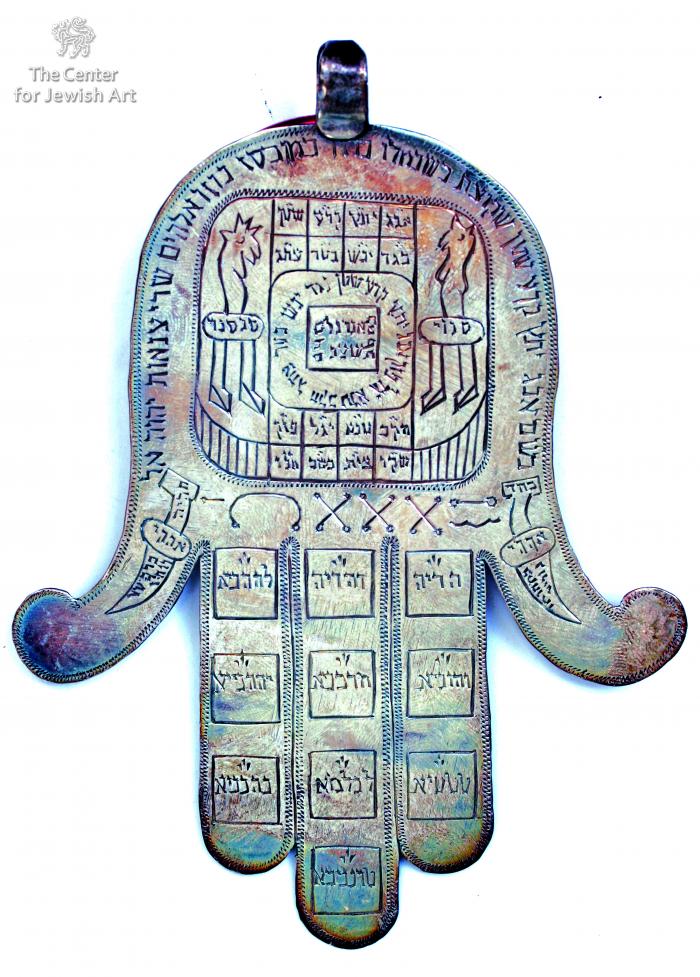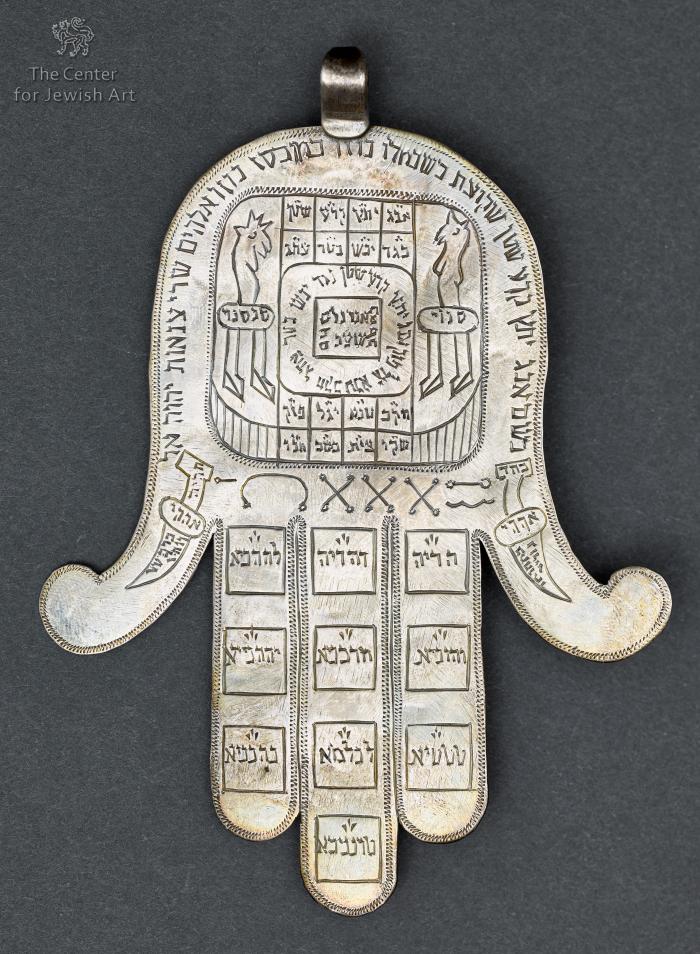Obj. ID: 36396 Amulet, Israel/Eretz Israel, circa 1940

sub-set tree:
The following description was prepared by William Gross:
From earliest times, man has tried to protect himself from misfortune by the use of objects which he considered holy or otherwise (e.g., magically) potent. Amulets and talismans are items generally worn around the neck or wrist, carried in a pocket or purse or hung on a wall. They are meant to protect or aid those who carried or wore them. The Hebrew word for amulet, kame‘a, has the root meaning "to bind". Jewish amulets are usually comprised of texts (either letters or graphic symbols) that are inscribed on some sort of material; some may also contain plant matter or precious stones. The texts of amulets usually include holy names that are believed to have the ability to affect reality, along with incantations summoning angels or other magical powers. For the most part, an amulet has a specific purpose: to ease childbirth, facilitate recovery from illness, improve one’s livelihood, and so on, but in the modern world many are also made for general protection.
One of a group of three very special amulets created in Jerusalem in Eretz Israel, apparently by a maker of amulets with a background from Iran. These are among the most aesthetically and finely engraved amulets in the Gross Family Collection. The others are 027.001.341 and 027.001.343.This particular model carries inscriptions and visual depictions of two of the three angels, Sanoi and Sansanoi, knives and angel writing as well as magic squares. The images and the inscriptions are for the protection of both mother and child, mostly to ward off the evil intentions of Lilith. The image of the knives references a Kurdish tradition. The repetition of the 42 letter name of God is quite unusual.
The hamsa is arguably the most popular form of amulet against the Evil Eye and is used in a
The hamsa is arguably the most popular form of amulet against the Evil Eye and is used in a large number of countries in the Islamic world. Probably originating in Moslem Spain of the 12th or 13th century, it crossed the sea to Morocco with the expulsion of 1492 and spread across North Africa to the Middle and Far East.



